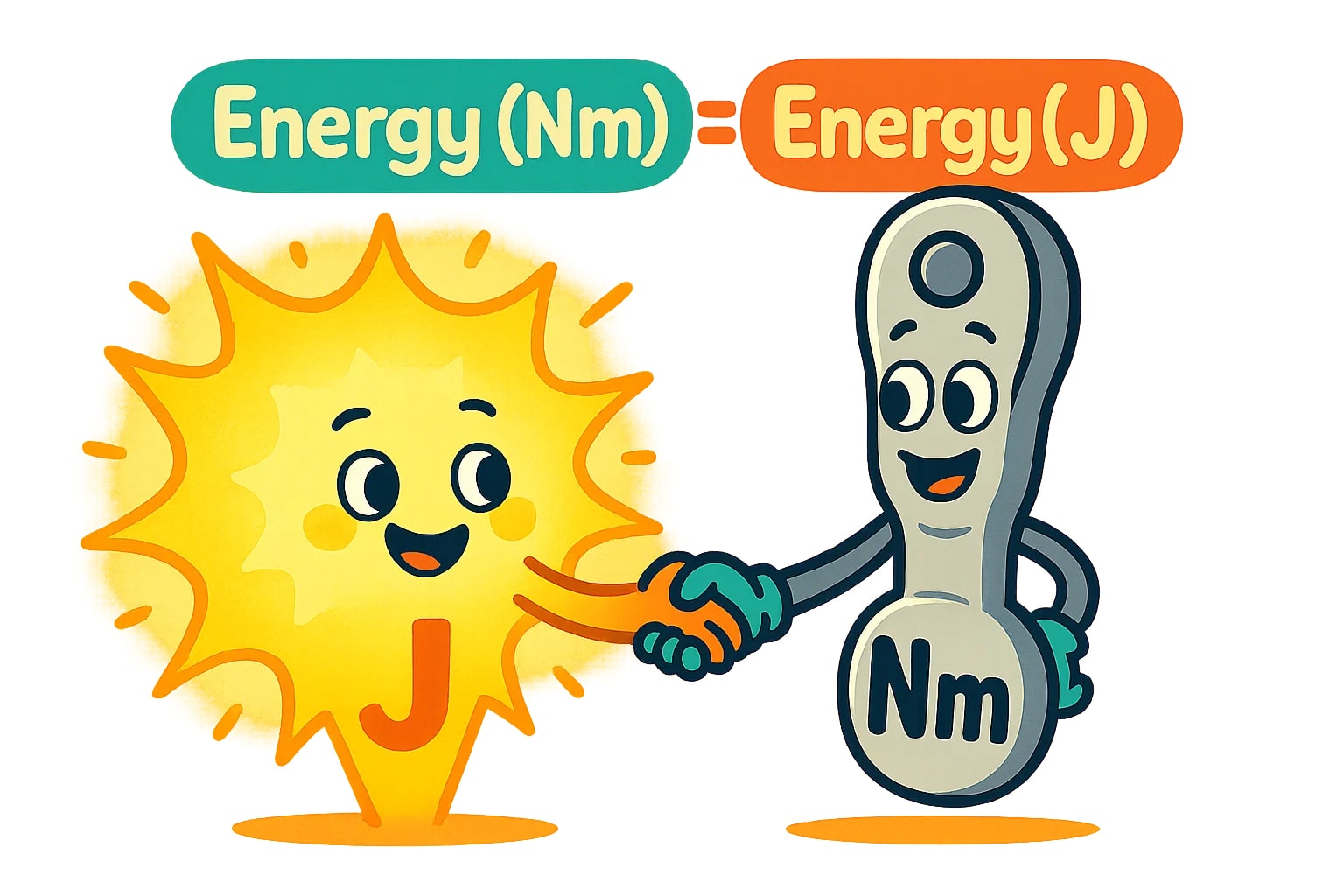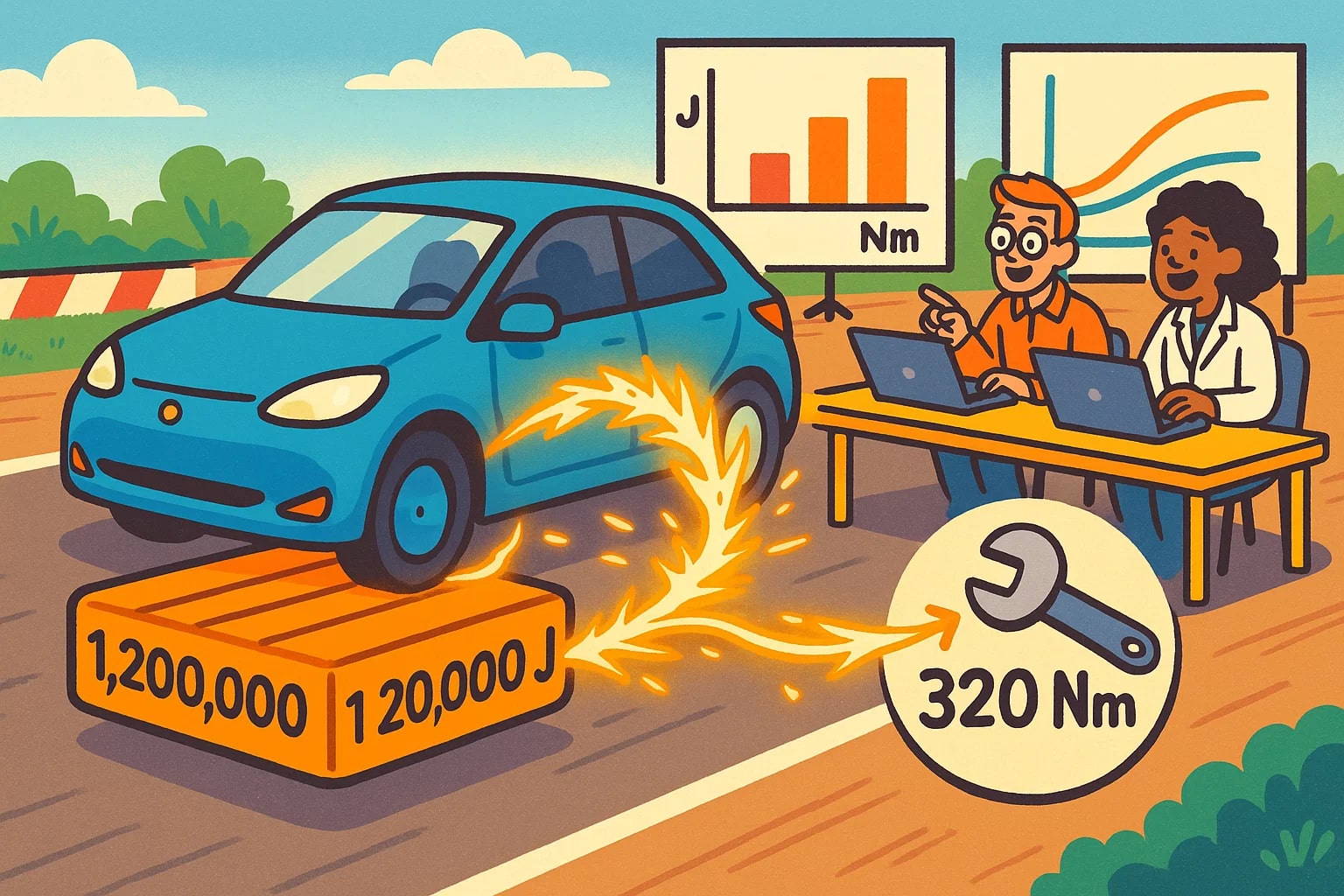joule to newton meter – How to convert J to Nm
The conversion from joule to newton meter is one of the most straightforward in physics — in fact, 1 J = 1 Nm when they’re both treated as measures of work or energy. That’s because they share the same dimensional definition: force multiplied by distance.
What is a joule?
A joule (J) is the SI unit of energy. It represents the work done when a force of one newton moves an object one meter in the direction of the force.
Formula:
1 J = 1 N × 1 m
You’ll see joules used to measure electrical energy, heat, kinetic energy, and more, from the battery in your phone to the power used in industrial machinery.
What is a newton meter?
A newton meter (Nm) is the SI unit for torque, which is rotational force. In physics, it can also represent energy because torque applied through a full rotation results in work.
Formula for torque:
τ = F × r
where F is force in newtons and r is the radius or distance in meters from the rotation axis.
When describing work or energy, 1 Nm is exactly equivalent to 1 J.

How to convert joule to newton meter
This is as direct as conversion gets:
Energy (Nm) = Energy (J)
Example:
If you have 20 J, then
Energy = 20 Nm
No multiplication or scaling is needed — the numbers are identical, only the context changes. You can work it out in seconds with our Energy Converter, or browse the Conversion Tools to find other unit types you might need.
Do you know?
-
Newton meter fact: In automotive engineering, torque in Nm is a critical figure for acceleration and towing capacity.
-
Joule fact: A 60-watt light bulb uses 60 joules of electrical energy every second it’s switched on.
-
Newton meter fact: In competitive cycling, Nm readings are used to optimize pedal force for maximum efficiency.
From Battery to Wheels: The Electric Car Torque Test
During testing of a prototype electric car, engineers measure both the energy drawn from the battery in joules and the torque delivered to the wheels in newton meters. On one short acceleration run, the car consumed 1 200 000 J from the battery pack. Because 1 J = 1 Nm for work, that’s also 1 200 000 Nm of work output in physics terms.
But torque tells another side of the story. The car’s motor produced 320 Nm from a standstill — enough to give it rapid acceleration. By looking at the joule measurement, the team could see how much total work was done over the run, while the torque reading revealed the instantaneous rotational force available at any moment.
This dual view is powerful. When reviewing the data, engineers found small inefficiencies in the way torque was being delivered under partial throttle. By fine-tuning the motor’s control software, they reduced total energy consumption by about 5% without lowering torque output. The result was a longer driving range and sharper acceleration — all from interpreting joules and newton meters together.
It’s a reminder that while the units can be numerically equivalent in energy terms, each one tells a different story in engineering practice.

Energy Units That Fit the Task
The joule to newton meter relationship is simple, but its usefulness lies in context. Joules are ideal for describing total energy, whether it’s stored in a battery, generated by a wind turbine, or released as heat. Newton meters shine in scenarios involving rotation — from engines and motors to wrenches and turbines.
Knowing when to use each keeps communication clear between scientists, engineers, and technicians. It means a torque spec on an engine, an energy report from a factory, and a design calculation in physics class can all connect back to the same fundamental concept: force over distance.
Whether you’re tuning an EV, calibrating machinery, or studying physics, switching between joules and newton meters gives you the flexibility to view performance from both the big-picture energy total and the precise torque details — all without ever changing the actual numbers.

